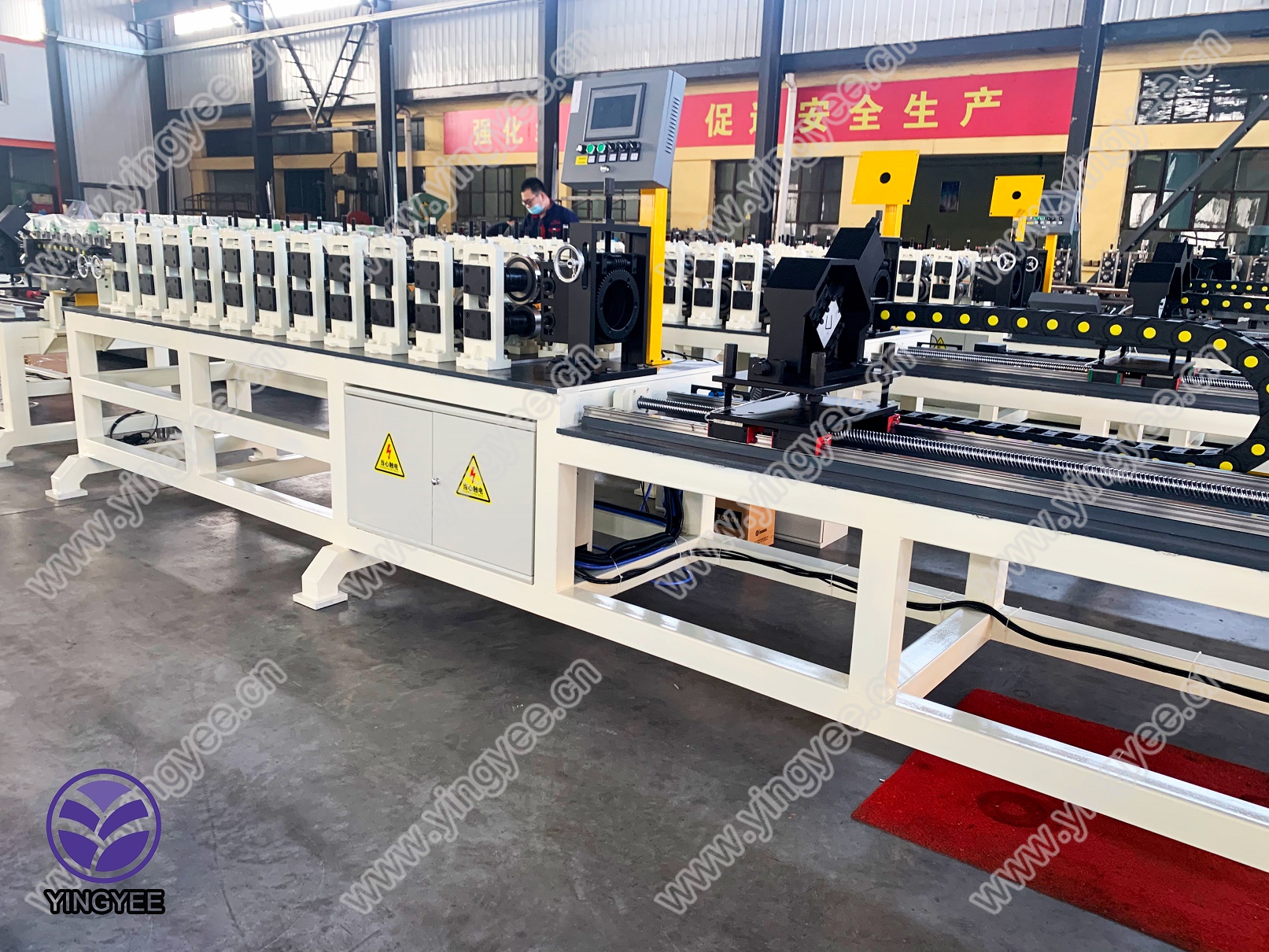
Manual Size Change of Stud and Track Roll Forming Machines Using Spacers
Roll forming machines have become integral in the manufacturing industry, especially in the production of steel studs and tracks. These machines are known for their efficiency, allowing manufacturers to create shaped materials from coiled steel with minimal waste. However, the versatility of these machines also requires adaptability, particularly when it comes to changing sizes for different production runs. One common method for achieving this flexibility is by using spacers to facilitate manual size changes.
Understanding Roll Forming Machines
Before delving into the size change process, it’s essential to understand how roll forming machines operate. Typically, these machines consist of a series of rollers that shape metal as it passes through. The rollers are designed to progressively bend the metal into a desired profile, such as that of studs and tracks used in construction. The precision and quality of the final product largely depend on the machine’s setup, including the roller configuration.
The Importance of Size Change
In manufacturing, the ability to change sizes quickly and efficiently is crucial. Different projects require varying dimensions of studs and tracks, and being able to switches between these sizes without extensive downtime is essential for competitiveness. In many cases, manufacturers may need to produce multiple sizes in one day, further emphasizing the need for a streamlined process.
Manual Size Change with Spacers
One effective method to change the dimensions of a roll forming machine is through the use of spacers. Spacers are physical components that can be inserted or removed to effectively adjust the distance between rollers. This distance is critical as it influences the bending angle and final shape of the metal being formed.
Step-by-Step Process of Manual Size Change

1. Preparation and Safety Before initiating a size change, operators should follow all safety protocols. This includes wearing appropriate personal protective equipment (PPE) and ensuring that the machine is powered down.
2. Gather Required Tools For the size change process, operators will need tools for removing and installing spacers, which may include wrenches or screwdrivers, depending on the machine design.
3. Remove Existing Rollers In many cases, certain rollers need to be detached to enable access to the spacers. This may involve loosening bolts and carefully lifting the rollers from their positions.
4. Install or Adjust Spacers With the rollers removed, operators can then insert or adjust spacers to achieve the desired size. The thickness and number of spacers will determine how much the roller distance changes. Precise measurements are crucial; using a caliper or measurement tape can help confirm that the spacing is adjusted accurately.
5. Reinstall Rollers Once the spacers are in place, the rollers must be reattached. It is important to ensure that they are secured properly to maintain alignment during operation.
6. Testing the Machine After the installation is complete, operators should conduct a test run with scrap material to verify that the new size has been achieved correctly. Observing the product output for any defects is vital to ensure quality standards are met.
7. Fine-Tuning If the initial test results show discrepancies in size or shape, further adjustments may be required. This iterative process ensures that the machines produce products that meet specifications.
Conclusion
The ability to manually change sizes in stud and track roll forming machines using spacers is a practical solution that underscores the importance of flexibility in manufacturing. By mastering this process, operators can maintain high levels of efficiency and responsiveness to market demands. The combination of technical skills and systematic methods in making these adjustments not only optimizes production but also plays a significant role in minimizing downtime and maximizing profitability in a competitive industry. As manufacturers continue to innovate and streamline operations, understanding and implementing these techniques will remain essential for success in the roll forming sector.